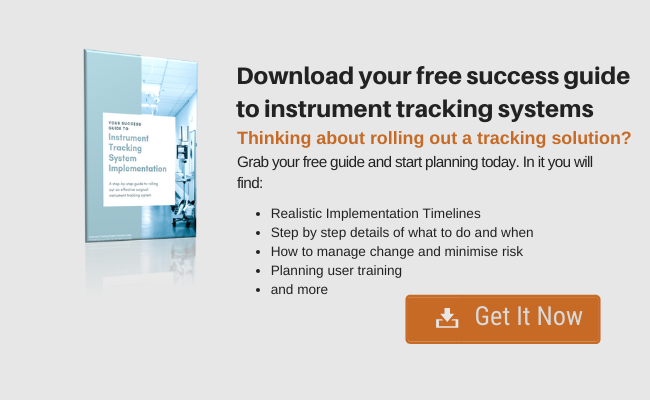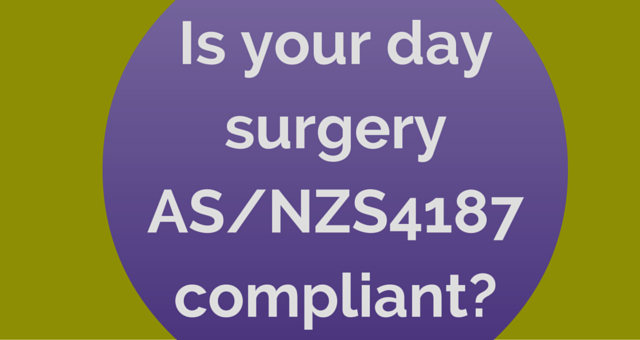How to simplify AS/NZS4187 compliance audits
A quicker and easier way for CSSD Managers and Perioperative Nurses to pass AS/NZS 4187 compliance audits

You know the feeling, accreditation is getting closer and your stress and anxiety levels are becoming elevated. Tomorrow is the day and you’re wondering, hoping, praying that you’ve crossed the "T's" and dotted the "I's". You’re not going to sleep well tonight, you will replay that same old movie in your mind over and over again.
I know from personal experience that accreditation is one of the most stressful periods in the life of a manager. Scancare is accredited to AS NZS ISO 9001-2008 and we are about to undergo external accreditation again. For managers of CSSD’s and theatres who run manual tracking systems, it is an incredible amount of work making sure that their documentation is update and accurate.
The good news is that when it comes to AS/NZS4187 compliance, for those who use an electronic tracking system based on the principles of quality management, most of the leg work is already done.
Medical Quality Management Principles
The principles of quality management are fairly straight forward:
- Write down what you do and do that same thing over and over.
- Say what you do and have proof you’re doing it.
So when it comes to AS/NZS4187, how can a tracking system based on quality management principles make your life easier?

Perioperative Documentation and Record keeping
An activity based surgical tracking system will capture:
- what is done
- when it’s done
- by whom it is done.
Without an electronic QA based tracking system, completing the paper forms to track each process will be a time consuming and frequently human error prone task.
Document Control
The standard prohibits the circulation of different versions of the same form at any one time. Therefore, if you run a paper based tracking system, this means a requirement for meticulous version control of different forms is essential.
Unlike that filing cabinet in the corner or that stash of forms that someone has in their desk drawer an electronic QA based tracking system always has the most current versions of forms. These forms can be printed as they are needed, so the latest version is always available.
Surgical Instrument Identification and Traceability
Electronic instrument tracking systems are generally designed around the AS 4187 compliance requirements relating to identification and traceability.
By simply using the system as it has been designed ensures that all compliance requirements are met. Scanning devices and screens contain inbuilt logic that guides users to collect the required information in a consistent fashion. Incomplete records, for example can't be saved to ensure the standard requirements are followed.
Check out our new guide:
Release of Surgical Instruments from CSSD
An electronic and activity based instrument tracking system has inbuilt logic that checks that:
- all required processes and business rules have been followed
- all required documentation has been completed correctly
and only then can the product be released.
This is a far cry from a paper based tracking system. Without going through sticker books and clipboards and filing cabinets there is no sure way of knowing that all processes and documents have been followed and completed according to the AS/NZS4187 requirements.
AS/NZS4187 Audit of Paper Based Tracking Systems
At audit time, a paper based tracking system requires a particular high degree of regular vigilance and monitoring to ensure the requirements of the relevant standard are met.
Incidents and a patient's wellbeing being compromised as a result of an incomplete process is sure to raise a manager's blood pressure. What follows is an often lengthy search through filing cabinets and sticker books in the hope of finding that all important piece of information that validates their processes.
In this scenario an electronic activity based instrument tracking system would have already alerted you when the problem occurred. Not a month later when the patient returns with an infection.
Conclusion
If you are using an electronic activity based instrument tracking system, you will be comfortable in the knowledge that all your required processes and business rules have been completed to AS/NZS4187 requirements and that all your documentation reflects that.
You sleep well the night before the audit and wake refreshed. The moment of truth arrives. Its audit day. The auditor asks you a question and you open your system, click a few buttons and demonstrate with proof that all your processes are being followed as per requirements. The auditor is pleased and recommends re-certification. A sense of relief and pride envelopes you.



